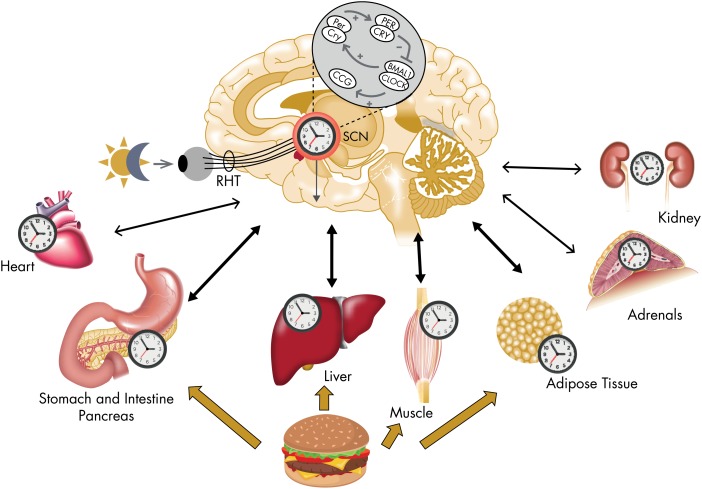Figure 2.
Illustration of the mammalian circadian system as conceptualized circa 2010. The molecular mechanism generating a self-sustained circadian oscillation in SCN neurons is a complex transcriptional-translational feedback loop comprising core transcriptional activators BMAL1/CLOCK and two sets of repressors PER and CRY. The core transcriptional activators BMAL1/CLOCK regulate numerous genes, referred to as “clock-controlled genes” (CCGs).The same molecular machinery has been found in other central tissues as well as in nearly all peripheral tissues examined so far. The light-dark cycle is the main external synchronizer of the central circadian pacemaker (via the retino-hypothalamic tract [RHT]), but other external stimuli can affect the phase and amplitude of peripheral oscillators. In particular, the timing of food intake has been recognized as an important external synchronizer for circadian time-keeping in peripheral organs involved in the control of energy metabolism. The master clock in the SCN serves to synchronize central and peripheral oscillators to optimize the function of the organism relative to the 24-hour periodicities in the environment. Signals from peripheral tissues can affect the phase and amplitude of the central pacemaker. [Elements of this figure were published in M. Garaulet and J. A. Madrid: Chronobiological aspects of nutrition, metabolic syndrome and obesity. Adv Drug Deliv Rev. 2010;62(9–10):967–978 (20), with permission. © Elsevier.]

